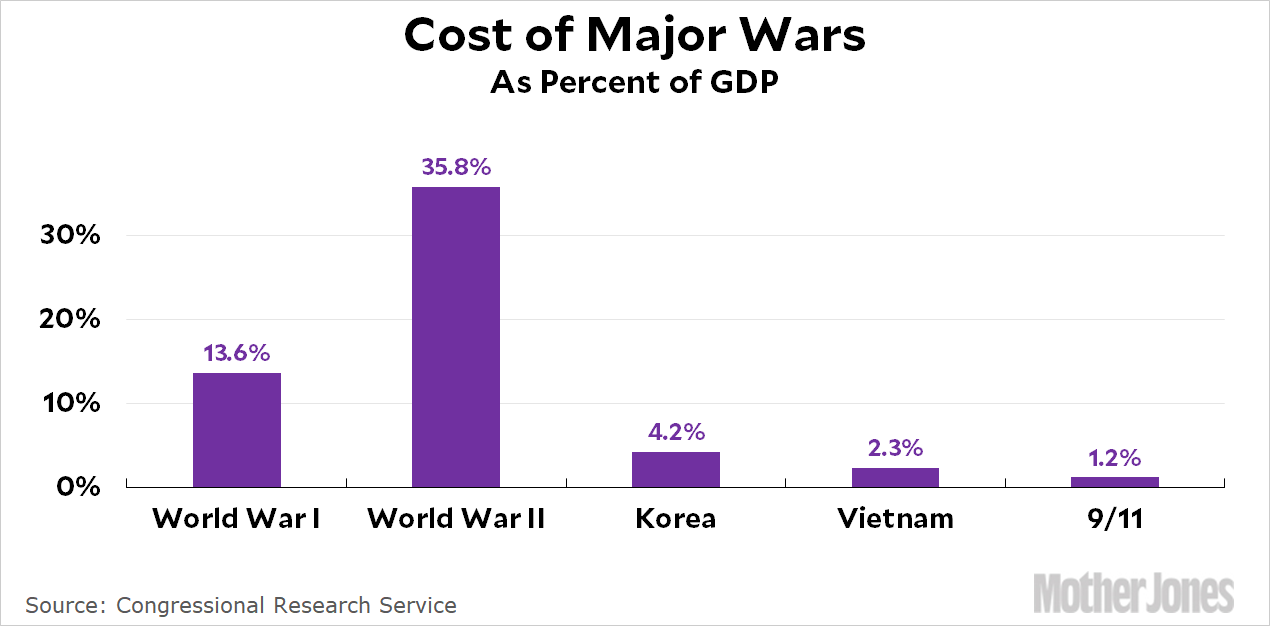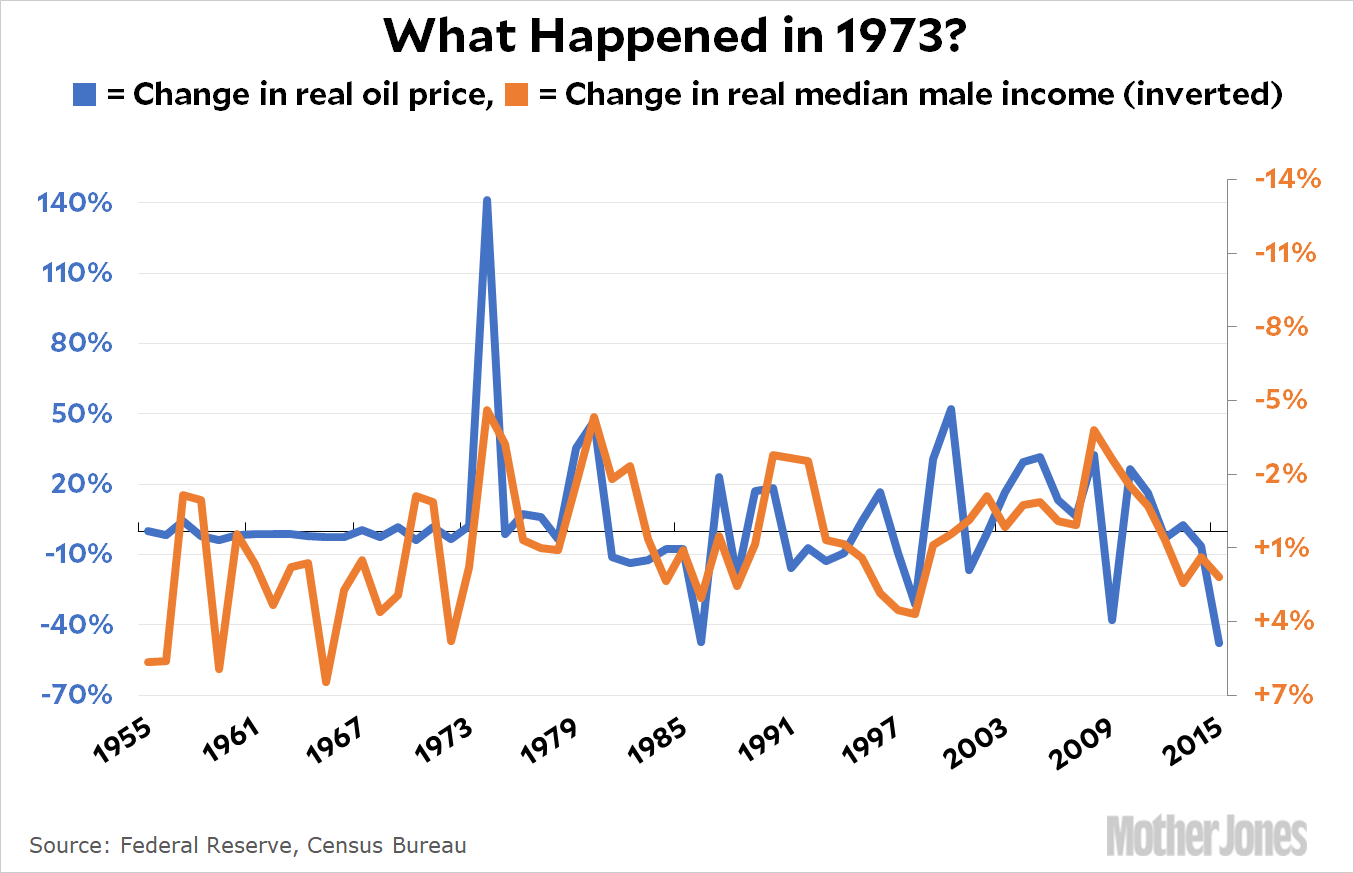A couple of days ago I wrote about climate change, which is, in any useful definition of the word important, more important than the doings of the president’s idiot son. I want to follow up with a little more detail on one of the points I made.
Right up front, I want to acknowledge that lots of other people have made these points before, and I haven’t studied them closely enough to provide any details. But I still think they form a useful prism for examining the challenge we face. This is a list of various groups and why they resist the big changes necessary to halt climate change:
- Regular people: don’t want to be constantly badgered and guilted about the car they drive or the meat they eat.
- Poor countries: don’t want to be stuck forever in low-energy poverty compared to currently rich countries.
- Oil companies: don’t want their businesses to crater because no one is buying fossil fuels anymore.
- Republicans: don’t like the business regulations that would be necessary to truly address climate change.
- The rich: don’t want to pay the taxes necessary to address climate change.
- OPEC countries: don’t want to leave $10 trillion of wealth sitting in the ground.
I’ve probably missed some, but you get the idea. The problem is that there are simply too many powerful groups who are fundamentally opposed to dramatic action on climate change. The odds that we’ll get even half of them to see the light in time to make a difference is pretty small.
Like it or not, then, we have to bribe everybody. Here are the bribes we have to offer:
- We have stop guilting people about their personal choices. Instead, spend a ton of money putting them to work building and installing solar/wind infrastructure.
- We have to make sure poor countries can continue to grow. That means spending money on infrastructure for India, Malaysia, Bolivia, etc.
- We have to ensure that oil companies get a piece of the de-carbonization pie.
- We have to give up on trying to regulate our way to carbon reduction. Sure, a carbon tax would still help things along, but it doesn’t have to be massive.
- We have to give the rich a piece of the de-carbonization pie. Frankly, this will probably happen automatically.
- We have to give OPEC—what? I’m not really sure what we can do for OPEC.
This is what leads me to think that our only real chance of success is to spend vast amounts of money on R&D and infrastructure buildout. Offhand, I’m thinking of about a trillion dollars a year.¹ Is that a lot? Why yes, it is. But it’s only about 5 percent of GDP. Here’s some context for that:

When we talk about a “wartime effort,” people tend to think about World War II, with its enormous defense buildup, rationing of supplies, and Rosie the Riveter. But we don’t need anything close to that. We don’t even need to spend what we did on World War I. We basically need a Korea-sized commitment. That shouldn’t scare anyone.
And here’s one other thing. A couple of days ago I put up this chart:

The orange line is median male earnings, but it’s inverted to show how closely it follows the trend line for spikes in oil prices. When oil prices spike upward, earnings go down. For example, in 1974 earnings dropped 5 percent thanks to the recession that followed the 1973 oil embargo.
This is amateur economics, but listen anyway. We’ve had periodic recessions for the entire history of our country, but median earnings rose anyway. They took a small hit during recessions, and then rose more during the subsequent expansions. In 1973 that stopped happening. There are lots of reasons for this, but I think oil is a big and underappreciated one. It has made the global economy far less stable than in the past, and ordinary workers generally don’t do well in an unstable world.
So that’s another reason to take decarbonization seriously: it would return us to a more stable global economy, which would most likely be good for workers. Shed no tears for the rich, though. They’d do fine. They just wouldn’t gobble up nearly the entire value of economic growth. And in return, for surprisingly little pain, we all get a world that’s safer, more habitable, and economically more stable. What’s not to like?²
¹For the US. Other countries would add to that. If we figure 5 percent of GDP, total global spending on R&D and infrastructure buildout would be about $3 trillion.
²Plenty. The rich are going to have to pay higher taxes, one way or another. Federal spending is going to skyrocket, which will be opposed by lots of tea party types. But what if Republicans were persuaded that (a) liberals will stop badgering them for lots of new regulations, and (b) the money will mostly be like Social Security, just passed through to private sector companies who build the infrastructure and nothing else will be done with it? Maybe a lot of them would decide to go along. Maybe.















